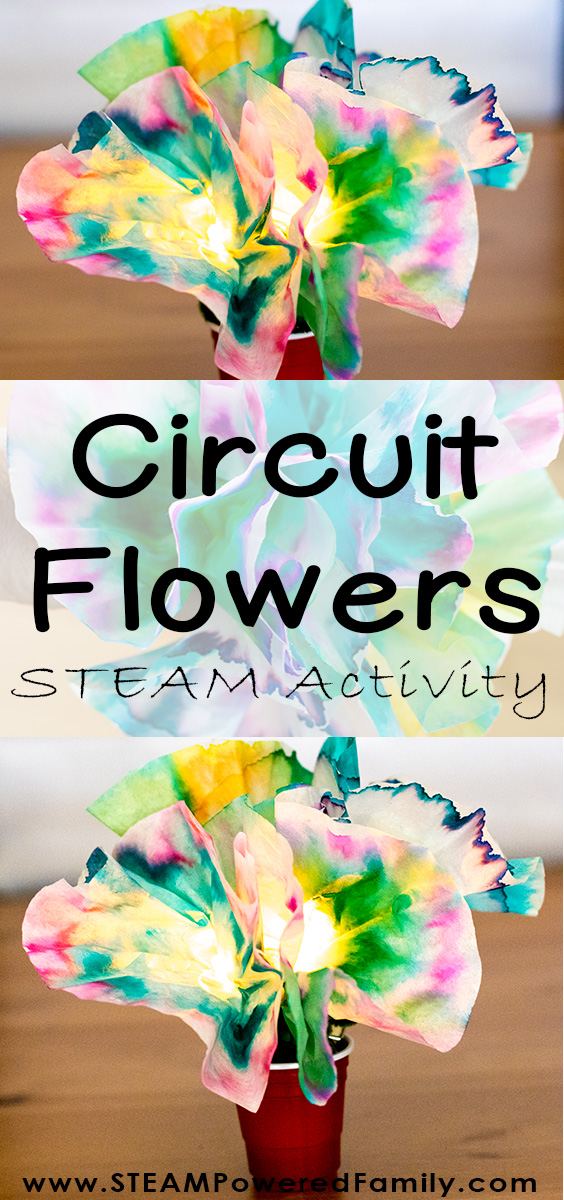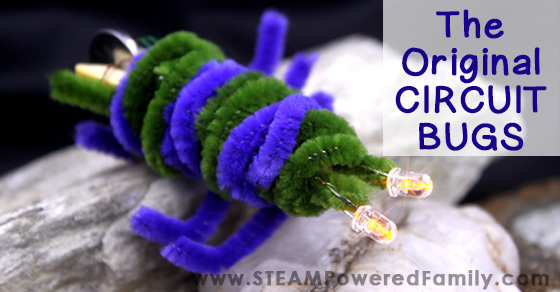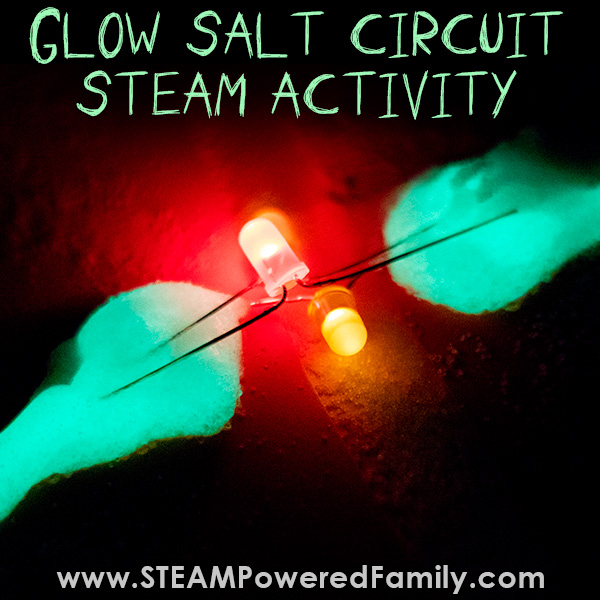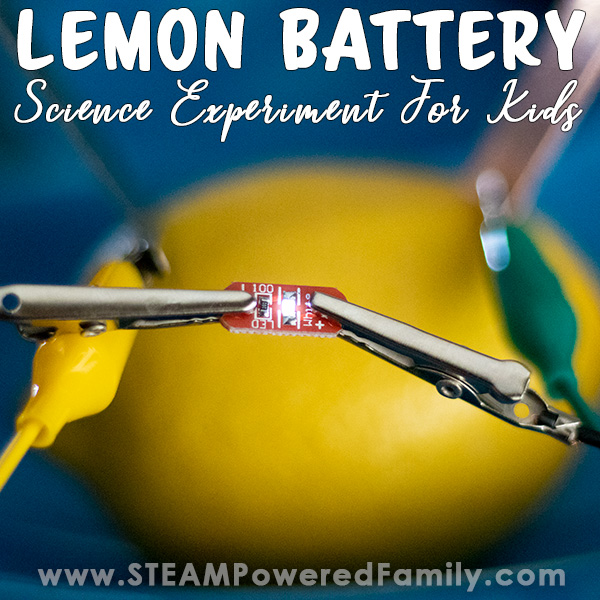How To Build A Circuit Flower
Circuit Bugs are one of our most popular original STEM activities here at STEAM Powered Family. We love how people all over the world have been building these adorable little bugs! So we figured it was time to build on our love of Circuit Bugs and create a new STEM activity – Circuit Flowers!
Circuit Flowers STEAM Activity
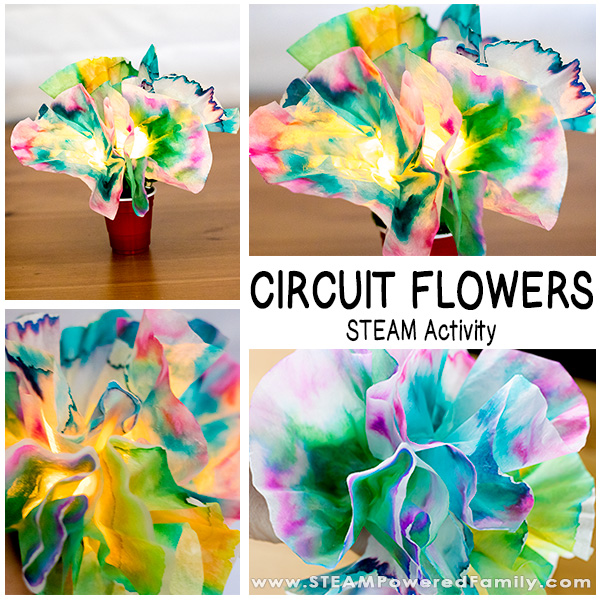
Disclaimer: This article may contain commission or affiliate links. As an Amazon Influencer I earn from qualifying purchases.
Not seeing our videos? Turn off any adblockers to ensure our video feed can be seen. Or visit our YouTube channel to see if the video has been uploaded there. We are slowly uploading our archives. Thanks!
When I created the Circuit Bug activity I wanted to develop a fun STEM twist on the typical crafting type projects. After my first little creation came to life, I was smitten. They were so darn cute! And my craft avoiding kids were actually excited to build and create. It was such a win, I couldn’t wait to share it with the all my readers.
And you loved Circuit Bugs as much as we do! Circuit Bugs continues to be a very popular activity in homes, schools and public programs. It is exciting to hear from people around the world that are loving our STEM bugs. Seeing your creations is always a highlight! So make sure you tag us on your builds on social media or linking to us here.
Since creating Circuit Bugs, we have also created so many circuit activities! Harry Potter Wands That Light Up, Potato Circuits, Squishy Circuits, an Olympic Torch Circuit, plus even more Circuit projects that always WOW!
With all the circuit building love, we figured it was time to revisit our circuits and come up with something new for our readers to build. Since it is still crazy cold here, we are dreaming about spring and the arrival of flowers! It may still be months away until we get real flowers, but we can bring some flowers to life with a simple circuit building activity.
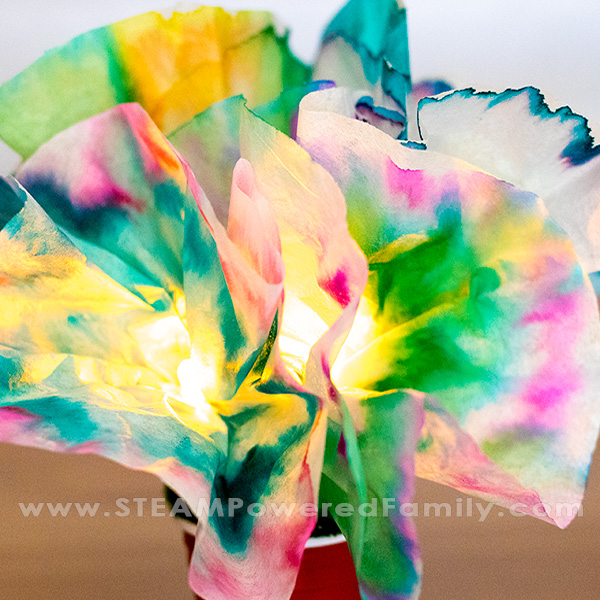
What You Need To Build Circuit Flowers
Since we have a circuit tinker center, it was easy to gather up everything we needed.
Coffee filters
Washable markers
Plates
Water
Water dropper or syringe
LEDs
Wire
Clothespin
CR2032 coin battery
Scissors
Electrical tape (green)
Mini solo cup or mini clay pot
Pipecleaners
HOW TO BUILD CIRCUIT FLOWERS
Building Circuit Flowers is actually slightly easier than Circuit Bugs. If you have a younger group, or students that are struggling with fine motor, this might be an easier build for them. The flowers might also appeal to girls more, and we are always trying to get more girls interested in STEM!
Chromatography Science To Create Art
This activity definitely falls into a full STEAM activity. The first step is to make your beautifully coloured papers using a technique called chromatography. This process works the best if you use secondary and tertiary colours, as they will separate as they spread, creating gorgeous patterns on your paper.
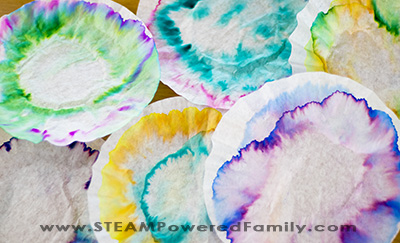
Start by flattening a coffee filter on a plate or other easy to clean surface. Using a washable marker draw a thick lined circle about half way between the middle and edge. You can use one colour, alternate colours, or even create a few circles (leave a wide space in between). There are no rules, except to ensure lots of white space is left to allow spreading of the colours.
Now add about a teaspoon of water to the middle of the coffee filter. As the water moves through the paper it will spread the colours out, and depending on your colours, may cause them to separate. You should end up with a beautiful water coloured papers.
Let dry completely.
Circuit Time – From Bugs to Flowers
If you have made our Circuit Bugs, you should be familiar with the process in building out our circuit.
First step – we always test the LED! The last thing you want to do is build your flower only to discover your LED doesn’t work. Simply slip your coin battery between the legs of the LED. If it doesn’t work, turn the battery around. If it still doesn’t work you need a different LED.
Cut your wires and strip the ends. You need two wires, approximately 8 inches in length. Strip about half an inch from each end to expose the wire. These are your contact points with your battery and LED.
Take your coffee filter paper and grab it in the middle, roll and bunch it to gather it up and form your flower. You should have a small “stalk”.
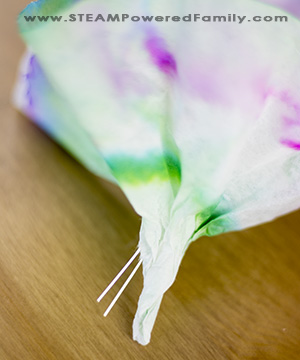
Push the legs of the LED bulb through the paper just off to the side of the stalk in your paper.
Now wrap one wire tightly around the first leg. Repeat with the other wire around the second leg.
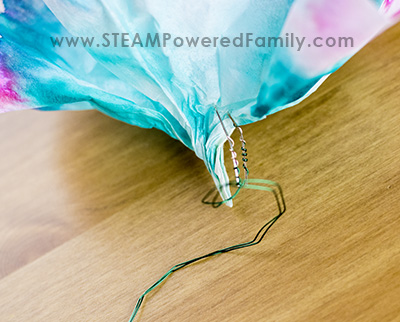
Slide the legs of the LED onto the end of your clothespin, so one leg is on each side. Tape into place. Now tape your stalk to the other clothespin end. This is to help secure everything.
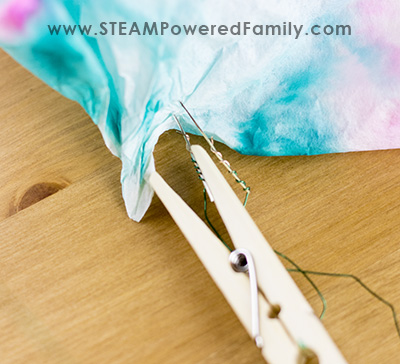
Wrap the wires around your clothespin, then separate the wires, and wrap them individually around each side as you get down to the clamping end of your clothespin. You want to end your wrap with the stripped part of your wire on the inside of the clothespin.
Now slide your battery into the clothespin so it makes contact with the wires. If it doesn’t work, turn your battery around.
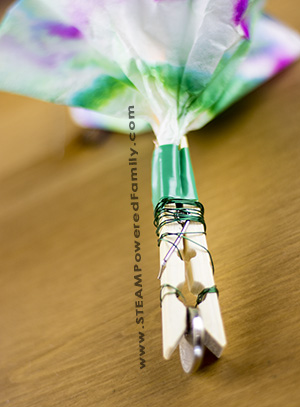
Your Flower Has Come To Life!
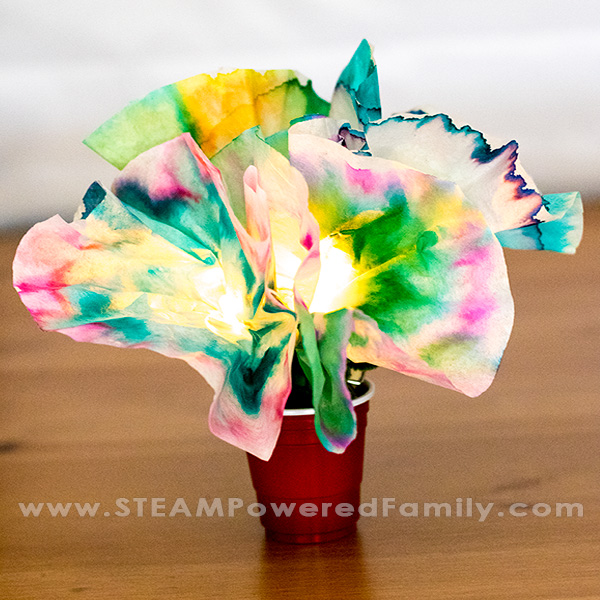
Finishing Your Circuit Flower
You can wrap the clothespin with green pipecleaners to finish it off so it looks nice. We found these adorable miniature red solo cups that made the perfect pots for our bouquets. You could also use real, miniature, clay pots.
To turn on your flowers, simply open the clothespin and insert the battery. To turn them off, remove the battery. Do not leave turned on for long periods of time. With a little care, your circuit creations can last a long time. My Circuit Bugs still light up even years after first creating them!
Even without the lights this bouquet is so beautiful!
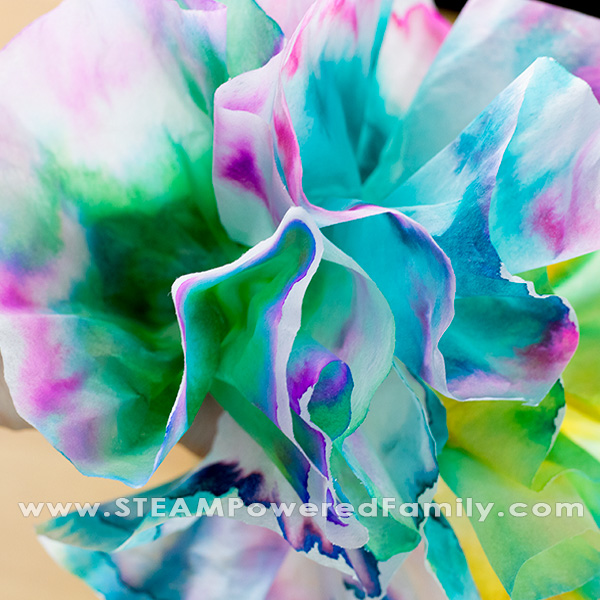
But then turn on the lights and WOW!
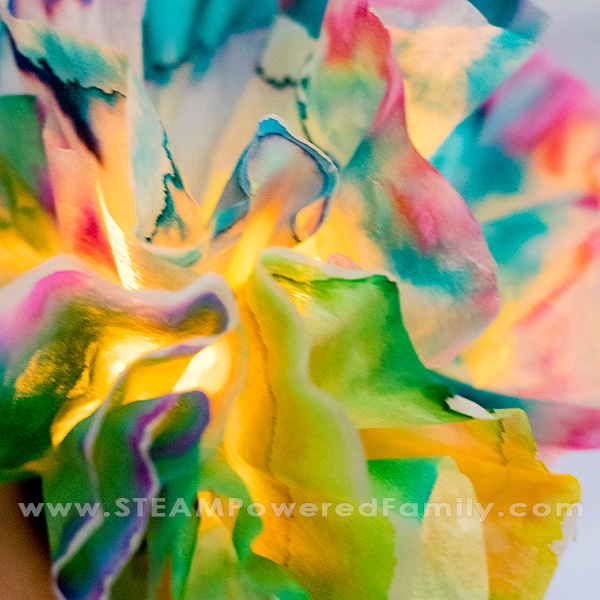
Circuit Flowers are fantastic for Mother’s Day, Spring STEM, a botanical unit study, and more. Happy circuit building!
Spring Code Breakers – STEM Printables
Members of the STEAM Powered Family mailing list get access to educational resources and printables. Use this form to sign up and immediately unlock our Spring Code Breakers printables.
